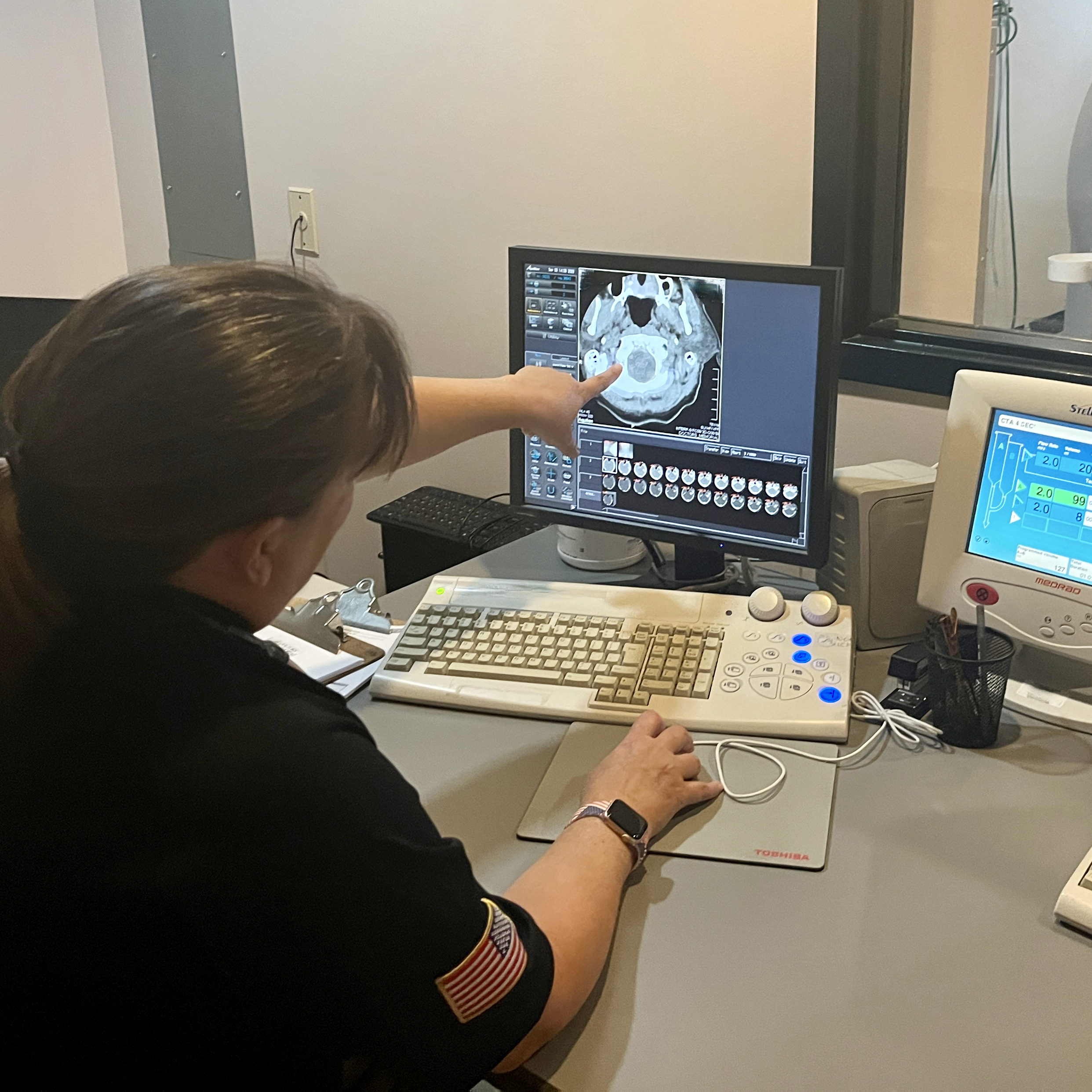“We Can Breathe Now!” Thanks to NDMS
With Expertise Onsite, Rural Hospital Treats More Patients, Reduces Transfers & Keeps Patients in Their Community
September 2023 | By: Stephen Clifford, Deputy Team Commander, DMAT-NY2
Soon after Hurricane Idalia swept through north-central Florida, a team of health care providers from the National Disaster Medical System (NDMS) walked into the emergency department at Doctor’s Memorial Hospital in Perry, Florida. The emergency department was the only area within the hospital still treating patients, and they were at capacity with very few hospital staff available after the storm.
“We can breathe now,” said one of the nurses. “They are here to help.”
At the request of state health officials, the Administration for Strategic Preparedness and Response deployed 14 NDMS personnel – including doctors, nurses, paramedics, and safety and administrative personnel – to this small, rural hospital to help care for the community. Most of the hospital’s staff were personally affected by the hurricane and could not report for duty. In situations like this, NDMS support becomes vital.
“We have the training and experience to treat almost anything that walks through the door,” said Dr. Alisa Roberts, one of the NDMS emergency physicians who arrived in Perry to help.
The team worked alongside hospital staff to treat 325 patients in eight days. Many patients arriving at the emergency department had minor injuries or illnesses. Several patients required care that normally would be beyond the services available at a small, rural hospital. Instead of transferring them to Tallahassee, away from their homes and family, the expertise of the DMAT providers allowed the patients to be treated onsite and discharged quickly. Here are their stories. (Names have been changed to protect patient privacy.)

‘Patrick’, an older adult, came to the hospital in distress with a wooden toothpick lodged in his airway. Wooden objects don’t routinely appear in X-rays, making removal more difficult. In such situations, a small, rural hospital would likely air transport the patient to a regional hospital for removal. Dr. Roberts didn’t want to wait because the foreign body might move and entirely obstruct the patient’s ability to breathe. Waiting also would increase the risk of infection and the possibility of an airway perforation. Pulling the team together, Dr. Roberts sedated the patient with the help of NDMS Nurse Scott Kress and used a video laryngoscopy to visualize the foreign body and retrieve it using a pair of forceps. The patient was placed on antibiotics and discharged without having to transport him away from his community.

'Lisa,' a woman in her 50s, arrived at the hospital in the evening. She had fallen and was complaining about head and chest pain. Concerned about a possible blood clot, the doctor ordered a CT scan. However, they could not digitally transfer the image for interpretation due to inconsistent power issues. With NDMS onsite and a CT scan in hand, Dr. Roberts could read the CT imagery. She confirmed no blood clot in the brain and chest, allowing the patient to avoid an unneeded and costly transport to Tallahassee and preserving limited EMS resources.
Evelyn, a 15-month-old having an allergic reaction to medication, was brought to the hospital by ambulance. Although EMS had administered epinephrine and diphenhydramine to relieve breathing symptoms, an antihistamine blocker was needed to provide additional relief and help prevent symptoms from returning. Without access to the proper child-size medication dosage, NDMS members worked with what they had in the field.
“Working in austere environments is challenging and requires innovative thinking,” explained NDMS Supply Management Lead Steven Kress. “With no access to an onsite pharmacist, we called on our NDMS pharmacist who was working at another location. We explained what medication was available at the hospital and what we had in our own cache of medical supplies. With his help, we were able to prepare a pediatric dosage using the only medication available at the hospital.”
To help administer the medication, the NDMS team used an apple banana smoothy from within its cache of MREs (Meals Ready to Eat). Evelyn drank the smoothy, and even asked for more. Later that day, she left the hospital with a souvenir, the MRE that helped relieve her symptoms and keep her out of the hospital.
Sarah, a middle-aged woman, presented with a complicated forearm fracture that needed to be aligned and splinted. In larger hospitals, an orthopedic or emergency physician would be available to set the arm while another doctor would administer and monitor sedation. However, most rural hospitals do not have this level of expertise inhouse. The NDMS team stepped in. With expertise in reducing and splitting fracture bones and extra staff to administer and monitor sedation, the fracture was stabilized for later treatment by a specialist. The patient was discharged locally so she could return home that afternoon.
"DMAT is one of the best kept secrets in our emergency response system,” said Lauren Faison-Clark, interim CEO for Doctor’s Memorial Hospital. “They swooped in immediately after Idalia and offered critical support. They allowed us to take care of our community and our staff who were suffering their own personal crises.”
According to Ashley Biddy, director of nursing at Doctor’s Memorial Hospital, DMAT has been a lifesaver to our staff and patients. “Post-storm we saw a surge of patients with injuries related to storm clean up. The patients and our staff were so complimentary of the DMAT's expertise and help with patient experience. They immediately merged into our facility and became family."

